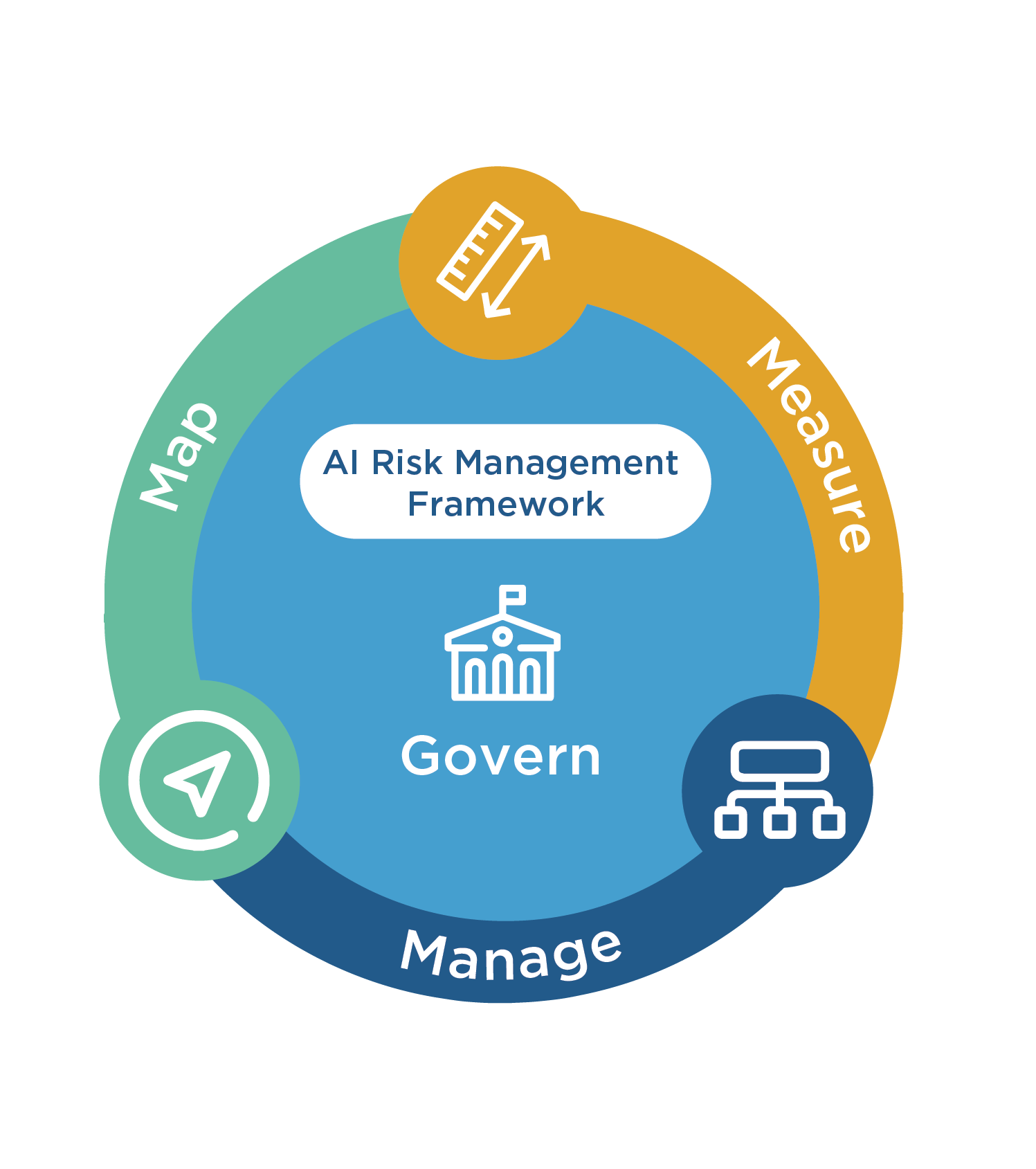In a world where cyber threats constantly evolve, managing security and privacy risks is crucial for organizations. Risk management frameworks provide a structured approach to identify, assess, and mitigate these risks. Among these frameworks, the NIST Risk Management Framework (RMF) stands out for its flexibility and comprehensive integration into the information systems life cycle.
The National Institute of Standards and Technology (NIST), a U.S. federal agency, developed the NIST RMF. It helps organizations systematically manage security and privacy risks. The RMF integrates risk management activities throughout the system life cycle, enabling a proactive and continuous approach.
Framework Structure
The framework is divided into two main parts:
- First Part: This part discusses how organizations can frame AI-related risks and outlines the characteristics of trustworthy AI systems. It includes aspects such as transparency, fairness, security, and accountability.
- Second Part: This is the core of the framework and describes four specific functions:
- Govern: Establish policies and processes to oversee AI development and deployment.
- Map: Identify and understand the specific risks associated with AI systems.
- Measure: Evaluate and quantify the risks and potential impacts of AI systems.
- Manage: Implement strategies to mitigate and manage the identified risks.
These functions can be applied in context-specific use cases and at any stage of the AI life cycle.
Implementation
The RMF implementation revolves around six main steps:
- Preparation: This step prepares the organization to manage risks by defining roles, responsibilities, and necessary resources.
- Categorization: Systems and information are classified based on their potential impact on security and privacy.
- Selection: Appropriate security controls are chosen based on risk assessment.
- Implementation: The selected security controls are deployed and documented.
- Assessment: The effectiveness of the security controls is verified to ensure they function as intended.
- Authorization: A risk-based decision is made to authorize the system to operate.
- Monitoring: Security controls and associated risks are continuously monitored.
Key Principles and Ethical Considerations
The NIST AI RMF also prioritizes ethical considerations, focusing on improving the trustworthiness and reliability of AI systems. Key principles include:
- Fairness: Ensuring that AI systems are designed and deployed in a fair and equitable manner, preventing biases or discrimination.
- Transparency: Promoting transparency and explainability of AI systems, enabling stakeholders to understand decision-making processes and assess system reliability.
- Accountability: Establishing mechanisms for accountability and oversight, including clear roles and responsibilities for managing AI risks and ensuring compliance with ethical guidelines.
- Security: Ensuring that AI systems are secure and resilient to attacks, and that they do not pose undue risks to individuals or society.
Benefits of the NIST RMF
The RMF offers several advantages:
- Flexibility: It is adaptable to any type of system or organization.
- Integration: It integrates security and privacy risk management into the system life cycle.
- Accountability: It establishes clear responsibilities for implementing security controls.
Challenges
Challenges associated with implementing the NIST RMF include:
- The complexity of the standard.
- The need for specialized expertise.
- The potential costs and resources required for implementation.
Conclusion
The NIST Risk Management Framework is a powerful tool to help organizations manage security and privacy risks effectively and efficiently. By following the RMF steps, organizations can improve their security posture and protect their information assets. Although the agency also released a companion voluntary AI RMF Playbook, which suggests ways to navigate and use the framework, the framework remains complex. If you want to learn more about the NIST Risk Management Framework, feel free to contact us. Mirabilis AI is a consulting firm specializing in AI integration and deployment, and we can support you in your AI risk management project. Additionally, our Aii Methodology can further streamline the process, making it easier to implement and manage.
La Méthodologie Aii est aussi disponible en français.
Source : NIST Risk Management Framework | CSRC : NIST Special Publication (SP) 800-37 Rev. 2
Image credit : N. Hanacek/NIST
#airmf #aiframework #airisk #aisafety #aigovernance #mirabilisai #aiimethodology #methodologieaii





Leave a Reply